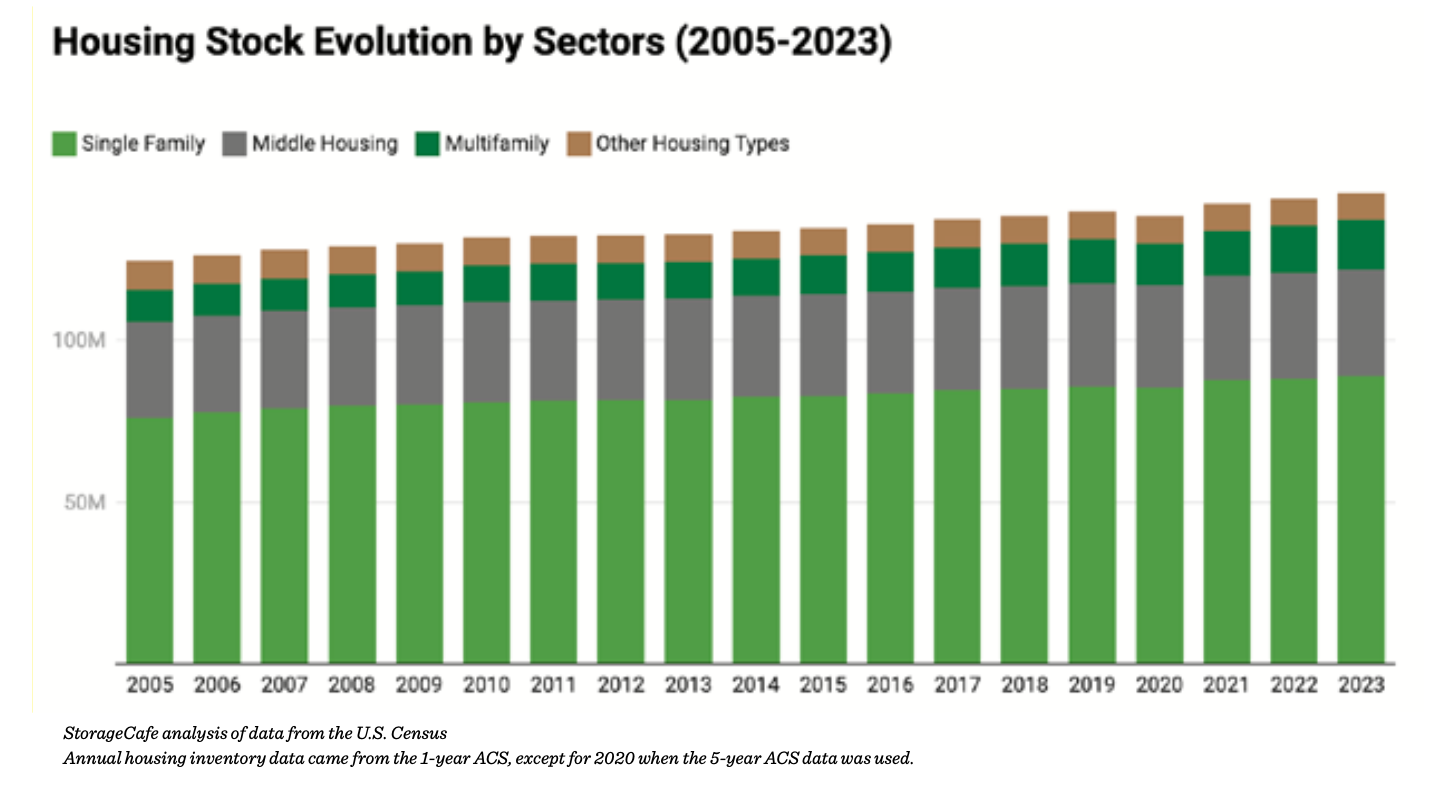Housing inventory is at the crux of the residential real estate industry and is cited often as the most important factor to a strong 2025.
In Chicago Agent’s recent 2025 predictions survey, 53% of agents said inventory was the issue that would affect the residential real estate market the most this year. Inventory received more than double the responses of other key issues, such as interest rates and home prices.

A recent StorageCafe study examined housing inventory trends across the U.S. since 2025. Among the key findings:
National housing inventory increased by 16.7% from 2005 to 2023.
Multifamily housing drove much of the growth, increasing 54% nationwide, with apartment stock doubling in more than 120 cities.
Meanwhile, middle housing — such as duplexes, condos and townhomes — grew by just 11.3% and single-family homes by 16.7% during the same period.
91% of U.S. cities saw housing inventory increases since 2005, and home prices increased in 99.4% of cities over the same time period.
Among Chicagoland’s largest communities, most fell short of the national growth percentage, with only Elgin and Joliet exceeding the 16.7% threshold.
Housing growth has outpaced U.S. population growth (about 11%) since 2005, yet housing supply remains short of meeting demand, while prices keep rising, StorageCafe noted. The current housing deficit in the U.S. is about 3.7 million homes, according to Freddie Mac.
In general, the South is leading the way on housing inventory expansion, while the Midwest, and Michigan in particular, had the greatest number of communities with inventory losses, StorageCafe found.
Locally, Cicero and Schaumburg both were ranked among the top 35 hot spots nationwide for middle housing, with townhomes, condos, duplexes and similar properties making up more than half the housing stock in those communities.
In its report, StorageCafe said it “analyzed 489 cities with populations over 55,000, ranking them based on local inventory growth across various residence types — including single family, multifamily, middle housing, mobile homes, boats, RVs and vans. To assess the broader impact of housing growth, we incorporated additional data on housing availability (units per capita), pricing and employment.”
The report then ranked those 489 communities in order, showing which cities are leading the inventory expansion. The top five communities on the list were all in Texas: Frisco, McKinney, The Woodlands, Round Rock and Sugar Land. Thirty-one of the top 50 cities are in the South, and 18 are in the West. The only top-50 city outside those regions is Sioux Falls, South Dakota, which ranked No. 22.
The top-ranked city in Chicagoland is Elgin, at No. 164, followed by Joliet, Naperville, Bolingbrook and Aurora. Each of those cities increased its housing stock by at least 10% since 2005. Chicago’s housing growth was just behind, at 9.95%.
